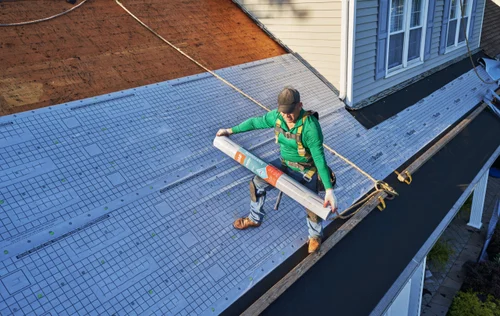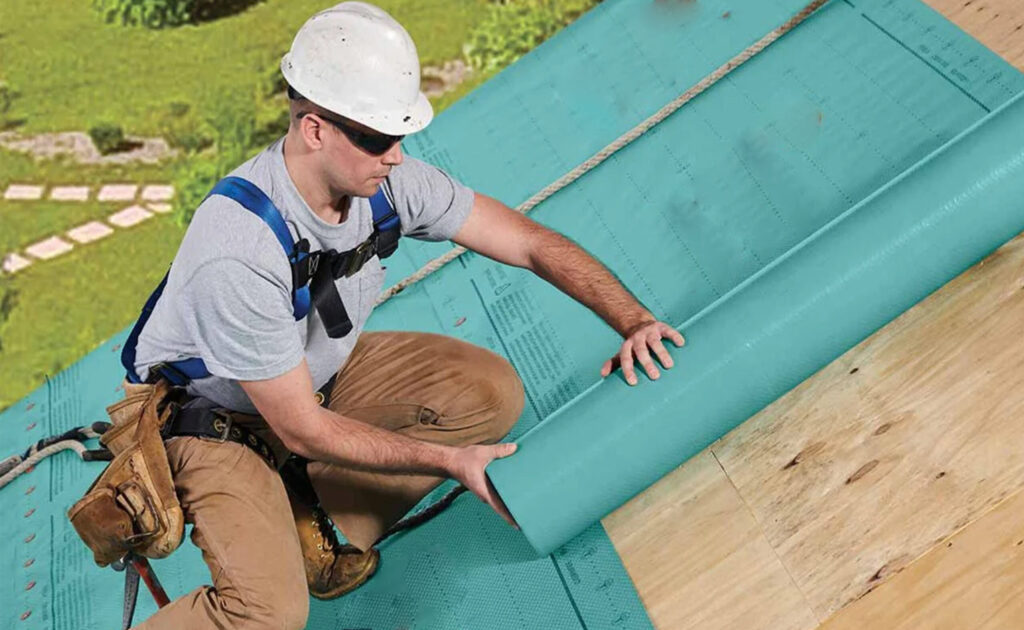What Is the Best Underlayment For Roofing?
Let’s talk real. When you’re putting a roof over your home—or fixing an old one—what goes underneath your shingles matters just as much as the shingles themselves. That layer is called the underlayment for roofing, and choosing the right one can be the difference between a roof that lasts 30 years and one that leaks in 5.
As someone who’s been up on Toledo roofs for over 30 years, I’ve seen what works and what fails. If you’re wondering what is the best underlayment for roofing, this guide breaks it all down, plain and simple.
What Is Roof Underlayment?
Before we slap on shingles or metal panels, we lay down a barrier called roof underlayment. It protects your roof deck from moisture, ice, and wind-driven rain. Think of it as your roof’s insurance policy—it’s the backup that keeps things dry when your top layer takes a hit.

Types of Underlayment for Roofing
Not all underlayments are built the same. Here’s a roofer’s breakdown:
1. Felt Underlayment (a.k.a. tar paper)
It’s the old-school choice. Affordable, decent protection, but it can tear easily during high winds or heavy install days. Not ideal for long-term performance.
2. Synthetic Underlayment for Roofing
Now this is where the game changed. Lightweight, tear-resistant, and it won’t wrinkle or absorb water. Synthetic underlayment for roof is what most pros (us included) use today.
3. Peel and Stick Underlayment
This is your heavy-duty player. It self-adheres and seals around nails. It’s a must for areas prone to ice dams or heavy rain—especially high temperature underlayment for metal roofs or tile roofs.

What’s the Best Underlayment for Your Roof?
It depends on what type of roof you’re getting:
- Best underlayment for metal roof? Go for high temp synthetic underlayment or peel-and-stick like Grace Ice and Water Shield HT. These can handle the heat that builds under metal panels.
- Best roof underlayment for asphalt shingles? We recommend a high-quality synthetic. It’s more reliable than old-school felt and stands up to weather during install.
- Best underlayment for tile roof in Arizona? That dry heat calls for a tough underlayment. Again, peel and stick underlayment for metal roof or tile does the job.
- Flat roof? You’ll need a membrane-based underlayment with superior water-blocking.
Roofing in Toledo? Here’s What We Recommend
At Pro Craft Home Products, our go-to for Toledo homes is synthetic underlayment paired with ice and water shield in critical areas—valleys, eaves, and low slopes. This combo holds strong against snow, heavy rain, and wild Ohio weather.
If you’re getting metal roofing, we’ll use the best synthetic underlayment for metal roof, and we always install peel and stick under high-risk spots. No shortcuts. No leaks.
How to Install Underlayment for Roofing (Don’t DIY This One)
Look, installing underlayment isn’t just rolling it out and nailing it down. It needs to be tight, straight, and layered correctly so water never finds a way in.
Whether it’s roof underlayment for shingles or underlayment for steel roofing, it has to be done by a crew that knows their stuff. Our team installs it the right way—the first time.
Final Word from a Roofer
If you’re asking what underlayment for metal roof or shingles is best, the answer isn’t just a brand—it’s experience. It’s knowing what works for your home, your climate, and your budget.
Don’t get caught with the wrong material. Call a local expert—Pro Craft Home Products—and we’ll walk your roof, show you your options, and make sure you get the best protection your money can buy.
Frequently Asked Questions
What is the best underlayment for roofing?
The best underlayment depends on your roof type. For shingles, go with synthetic underlayment. For metal or tile roofs, use a high-temp peel-and-stick underlayment like Grace or GAF.
What is the best underlayment for a metal roof?
Use a high temperature synthetic underlayment or peel and stick underlayment for metal roof. It can handle heat and seals tightly.
What is the best underlayment for asphalt shingles?
A durable synthetic underlayment offers better protection and longevity than felt. We use top-grade synthetics on all shingle jobs.
Is synthetic underlayment better than felt?
Yes. It’s stronger, water-resistant, and doesn’t tear like felt. It’s the professional choice in 2024 and beyond.
What is the best underlayment for roofing?
For most homes, synthetic underlayment is the best choice. It lasts longer, handles weather better, and won’t wrinkle or tear like old felt. For metal or tile roofs, we always go with high-temperature peel-and-stick underlayment for added protection.
What are the three types of roofing underlayment?
The three main types are:
- Felt Underlayment (like 15 lb or 30 lb asphalt-saturated felt)
- Synthetic Underlayment (lightweight, durable, modern material)
- Peel-and-Stick Underlayment (self-adhering, waterproof, ideal for ice-prone areas)
Is underlayment necessary for roofing?
Absolutely. Underlayment is your roof’s second line of defense. It protects the deck from wind-driven rain, snow, and moisture—especially before the shingles or metal go on.
Which is better, 30 lb felt or synthetic underlayment?
Synthetic underlayment beats 30 lb felt every time. It’s lighter, stronger, and won’t buckle or soak up moisture. That’s why most modern roofers (us included) won’t even touch felt anymore unless a builder insists.











